Private Herbert William Meadow,
Moss Side, Formby.
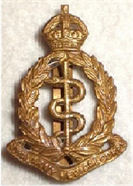
Herbert was born on 14th January 1896 to William and Elizabeth Meadow. He lived first at West Lane, Formby and later moved to Moss Side, with his parents, three sisters and two brothers.
Prior to the Great War Herbert was educated at St Peter’s School and found employment as a Telegram Messenger Boy at Formby’s Post Office.
Herbert volunteered in September 1914, serving in the Royal Army Medical Corps. After his training, he went to France on 10th July 1915 aged 19 years. Herbert
remained in France until the end of hostilities, when he returned to Formby and lived in Whitehouse Lane.
After the war, Herbert was a frequent sight around Formby, serving the community as one of the village’s postmen for over forty years. Herbert married Dorothy
Nellie Harris in 1921 and they had only one child. Leonard Meadow born in 1922 and he was killed in action during World War 2 whilst serving with Bomber command.
Herbert’s older brother Gunner Harold Meadow, Royal Field Artillery, was killed in action during the last phases of the Battle of the Somme on 5th October 1916.
Tragedy of war again was felt by the Meadow family when Herbert’s younger brother Private William Meadow, King’s Own Royal Lancaster Regiment, was killed in action on 2nd September 1918 during the Battle of the Drocourt-Queant Line. Herbert’s parents never fully recovered from the loss of two of their sons.
Herbert died in 1965 aged 69 years.
The Liverpool Pals
“I am not going to make you a speech of heroics, you have given me your answer, and I can telegraph to Lord Kitchener tonight to say that our second battalion is formed.
We have got to see this through to the bitter end, and dictate our terms of peace to Berlin, if it takes every man in the country.
This should be a battalion of pals, a battalion in which friends from the same office will fight shoulder to shoulder for the honour of Britain and the credit of Liverpool.
I do not attempt to minimise to you the hardship we will suffer, the risks you will run, I don’t ask you to uphold Liverpool’s honour, it would be an insult to think you could do anything but that.
But I do thank you, from the bottom of my heart, for coming here tonight and showing what is the spirit of Liverpool. A spirit, that ought to spread through every city and every town in the kingdom.
You have given a noble example in thus coming forward, you are certain to give a noble example on the field of battle.”(The Earl of Derby August 1914)
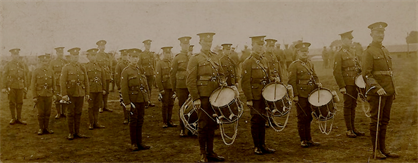
Leslie Titterington
Old Town Lane, Formby.
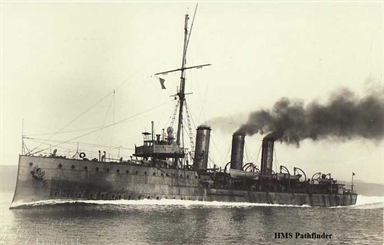
Leslie Titterington served in the Royal Navy as an Engine Room Artificer 3rd Class on HMS Pathfinder. He lived on Old Town Lane, Formby. Leslie born in 1891 and his parents were John and Alice Titterington. His father John was a local School Master.
He was killed in action one month after war was declared on 5th September 1914, when a torpedo, fired from U21 commanded by Otto Hersing, struck the ship HMS Pathfinder. 270 people were on board HMS Pathfinder at the time of the sinking, only 18 people survived. Leslie Titterington’s body has never been found.
Leslie was the first person from Formby to be killed in action during the First World War. However, his name does not appear on Formby’s War Memorial.
Lt. Col. George Alexander Blair
Carrs Crescent, Formby.

He was born on the 15th May 1865 at 10, Willowbank Street, Milton, Glasgow and educated at Bradford Grammar School. In 1888 he joined New College, Oxford University followed by St John’s College, Cambridge University in 1891. In 1896, he was called to the Bar and worked as a Barrister in Liverpool.
In 1899 he married Nalini Heloise Bonnerjee, an Indian female doctor who was born in 1871 in Calcutta. She was the daughter of the first president of the Indian National Congress, Womesh Chunder Bonnerjee. In 1911, they were both living at The Bungalow, Jubilee Road Formby later moving to Carrs Crescent, Formby.
In 1914 George was a Major in the 10th Liverpool Scottish, a Territorial Battalion of the Liverpool King’s Regiment. The Liverpool Scottish’s commanding officer at the time was deemed to be unfit for front line duty. As a result, George received promotion and went to France as the commanding officer of the Liverpool Scottish’s 26 officers and 829 men on 1st November 1914. However, within just a few weeks, George was replaced as commanding officer due to ill health.
After the war George and his wife Nalini moved to Lahore, India, (modern day Pakistan) in 1920. George lived until 1934 dying in Calcutta, West Bengal, India.
Peter Mawdsley
28 Watchyard Lane, Formby.
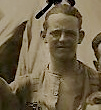
Sergeant Peter Mawdsley,
A Company - 1/7th Battalion Kings Liverpool Regiment
He was born in 1893, the son of James and Sarah Mawdsley. Peter was employed as a general labourer at the Gas Works in Formby before the war.
He enlisted in 1914 at Bootle. Peter was one of many Formby men who served with the 1/7th Battalion Kings Liverpool Regiment. He became a veteran of several battles on the Western Front including the Battles of Festubert, Loos, Ypres and Aubers Ridge.
Extracts from some of his letters home, which describe his experiences on the western front, were published in The Formby Times during the war.
Peter was killed in Action by shellfire on 24th July 1917 near Ypres, aged 24. He is buried at Vlamertinghe New Military Cemetery, West-Vlaanderen.
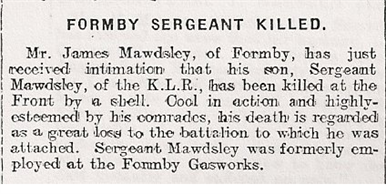
Southport Visitor 4th August 1917
Robert Balshaw
3 Massey's Cottages,
Kew Road, Formby.
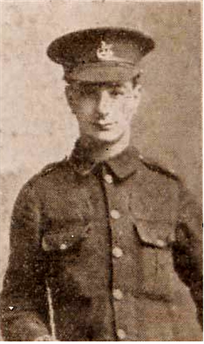
Private Robert Balshaw 1/7th Battalion King’s Liverpool Regiment was born in 1895 and was a labourer before the war.
He enlisted at Bootle, 4 days after war was declared on the 8th August 1914 and was stationed at Ramsgate, Kent during the first months of the war. His battalion sailed for France from Southampton on 7th March 1915.
Robert saw action at the Battle of Festubert in May 1915. On the 15th May 1915 Robert was shot and wounded in the head. He was evacuated from the front, to a Field hospital at Boulogne.
Sadly, five days later Robert died from his wounds at 11:00am on 20th May 1915. He was only 20 years old. He is buried within the Boulogne Eastern Cemetery in the Commonwealth War Graves section.
Robert Mercer
Woodbine Cottage
Dean's Court, Gores Lane, Formby.
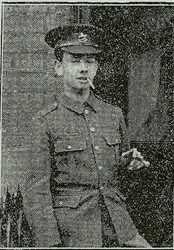
Private Robert Mercer, 7th Battalion King’s Liverpool Regiment, enlisted on 19th October 1914 at Formby. Bobby went to France with his regiment on 6th March 1915 aboard the ship The Golden Eagle. Bobby was killed by friendly fire, during a bayonet charge by the 7th KLR towards the German trenches on the 17th May 1915 during the Battle of Festubert. He was only aged 16 years old. He had spent just over two months at the front.
When Bobby enlisted in the 7th KLR, he lied about his age, telling the recruiting officer at Formby he was 18 years and 10 months old and not the 16 years he really was. Bobby was born in Seaforth on 8th October 1898 and lived at Woodbine Cottage, Dean’s Court, Gores Lane Formby, with his father William Mercer a dock labourer and his stepmother Mary Anne Mercer. Bobby attended St Peter's School and sang in St Peter’s church choir. Bobby’s father died in Formby one week before he was killed in France.
Prior to the Great War Bobby served in the Merchant Marine for the Cunard line. At the age of 13 years in April 1912, Bobby was serving as a boy steward on the Cunard line steam ship the RMS Carpathia. The Carpathia famously answered the distress call from the RMS Titanic and was the first ship to the scene of the sinking, picking up all the survivors. Bobby was onboard the Carpathia at the time and helped look after the survivors in the rescue. He later served on the RMS Aquitania in 1914, only leaving the ship to enlist in the Army in his hometown of Formby.
Stanley (Jack) Rowlands
Kirklake Road, Formby.
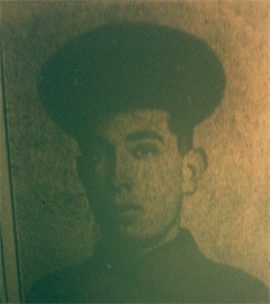
Rifleman Stanley "Jack" Rowlands, served with the 6th Battalion King's Liverpool Regiment. He was killed in action on 16th April 1915 at Ypres and was buried in a trench on the frontline. However, his grave was later destroyed in the fighting. His name is inscribed on the Menin Gate at Ypres and Formby War Memorial. He has no known grave.
Jack was born in 1895 in New Jersey, USA and was an American citizen. He enlisted in August 1914 to fight for Britain, his adoptive homeland. Jack lived with his grandmother on Kirklake Road, Formby and was a member of St Luke's Church. He was an apprentice engineer, employed by the shipbuilders Harland & Wolff at their offices in Liverpool.
Jack was 6'4" tall and was described as being a fine young man who was impulsive by the vicar of St Luke's Church, Formby. He was only 20 years old when was killed.
Sydney Lawrence Haward
Rose Cottage
Massam's Lane, Formby.

Private Sydney Lawrence Haward, 1/7th Battalion King’s Liverpool Regiment was born in 1883 in Wandsworth, London. He moved to Formby at the age of fourteen and was employed by Mrs Carter of Massams Lane as a gardener for next eighteen years. Sydney was also a member of the Independent Order of Oddfellows.
Sydney enlisted on 7th November 1914 and sailed to France on 7th March 1915 aboard the SS Golden Eagle. He saw action on the 17th March 1915 during which, he received a slight bullet wound to his left leg. He returned to frontline duty on 28th March 1915 in time to take part in the Battle of Festubert in May 1915. Sydney was killed in action on 16th May 1915. His grave is at Rue-PetillonMilitaryCemetery, Fleurbaix, France.
Thomas Lovelady Wood
Liverpool Road, Formby.
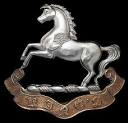
Thomas Lovelady Wood was born in Formby in 1891 and he lived on Liverpool Road, Formby at his father’s Smithy. He worked as an Assistant Shunter at Formby Power station.
His parents were Charles Alma Wood and Catherine Wood nee Lovelady. His father was a well-known, local blacksmith and wheelwright.
Thomas enlisted into the 13th Battalion Kings Liverpool Regiment at Seaforth. He died of his wounds aged 25 years old in a hospital at Rouen on 22nd July 1916. The Southport Visitor reported his death on 25th July 1916.
His brother Herbert Wood, who also served in 13th Battalion the Kings Liverpool Regiment, is also remembered on the Formby Roll of Honour. Fortunately for Bert, as he was known, he survived the Great War although he suffered from deafness for the rest of his life due to wounds he had suffered.
Lt. Victor comley McKeiver
Holmwood School
Barkfield Lane, Formby.
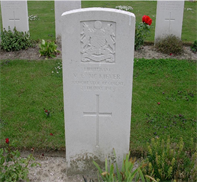
Lieutenant Victor Comley McKiever was born in 1889 at Pontypridd, Glamorgan. He emigrated with his family to Cape Town, South Africa in 1903. Victor was educated in South Africa and returned to the United Kingdom in 1908 to attend Selwyn College at Cambridge University. After leaving University in 1911, Victor moved to Formby gaining employment as assistant master at Holmwood School in Barkfield Lane. Victor also played cricket for Formby at Cricket Path and was Waterloo Rugby team's second XI captain.
He volunteered in August 1914, shortly after war was declared. Victor served in the 3rd Battalion Manchester Regiment and received a commission one month after enlisting. Victor arrived in France on 16th March 1915. He was later attached to the 2nd Battalion Manchester Regiment. Victor was seriously wounded and died of his wounds on 18th May 1915. He is buried at the Chester Farm Cemetery. His headstone has the incorrect date of his death as 28th May 1915.